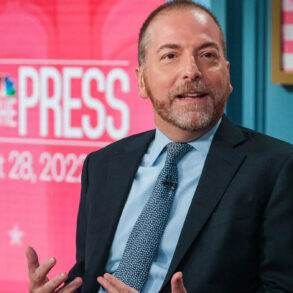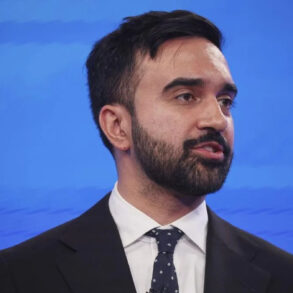On April 2, 2025, President Donald Trump stood before reporters in the White House Rose Garden and delivered what he called one of the most important announcements in American history. He declared the day “Liberation Day,” signaling the beginning of a new era in trade policy that would shake the foundation of global economics. Trump announced a sweeping set of tariffs on all imported goods, describing the move as “our declaration of economic independence.”
For decades, Trump argued, the United States has been treated unfairly by both allies and adversaries when it comes to trade. In his words, “our country has been looted, pillaged, raped, and plundered by nations near and far, both friend and foe alike.” With the signing of an executive order, he put into motion a strategy that he believes will reverse years of trade abuse and restore fairness for American workers, farmers, and manufacturers.
A 10 Percent Baseline and Much Higher for Offenders
Under the new policy, the United States will impose a 10 percent across-the-board tariff on all imported goods, effective April 5. This baseline is just the starting point. For countries that have been identified as the worst offenders in terms of unfair trade practices, much higher tariffs will go into effect on April 9. These include an additional 34 percent tariff on Chinese imports, bringing the total tariff on Chinese goods to 54 percent. Vietnam will face a 46 percent tariff, and the European Union will be hit with a 20 percent tariff.
Trump said the plan is simple and fair. “Reciprocal. That means they do it to us, and we do it to them. Very simple. Can’t get any simpler than that.”
The tariffs will be implemented under the authority of the International Emergency Economic Powers Act (IEEPA), a 1977 law that gives the president power to regulate commerce in response to threats to national security. Trump had already invoked the act in February to place penalties on Canada, Mexico, and China for their alleged roles in drug trafficking and illegal immigration.
Years of Unfair Trade and a Massive Deficit
White House officials have stated that these tariffs are a response to “unfair trade practices and a lack of reciprocity by U.S. trade partners.” They say these imbalances have fueled enormous trade deficits, weakened American industries, and harmed national and economic security. Last year alone, the United States recorded a record $1.2 trillion goods trade deficit.
Officials also point to the use of non-tariff barriers, which are often harder to detect but just as harmful. For example, Brazil requires special licenses to import agricultural products. Australia bans U.S. beef. Mexico limits the volume of agricultural goods that can enter the country. China avoids U.S. tariffs by routing goods through third-party nations like Cambodia, Thailand, and Vietnam.
A White House official explained the deeper problem with Vietnam, saying, “The problem with Vietnam is not their tariffs. The problem is everything else they do, including setting up shop for Communist China to send us things.”
Even U.S. allies have been accused of taking advantage of American generosity. One official claimed that Israel, which recently pledged to eliminate its remaining tariffs on U.S. goods, has been involved in intellectual property theft in the pharmaceutical sector.
A Strategy to Bring Jobs and Manufacturing Back to America
The goal of Trump’s tariff policy is to bring American jobs and manufacturing back home. By increasing the cost of foreign goods, the administration hopes to encourage companies to invest and build inside the United States. Trump stated plainly, “If you want your tariff rate to be zero, then you build your product right here in America.”
Already, companies like Hyundai, Apple, Johnson & Johnson, and Taiwan Semiconductor Manufacturing Company (TSMC) have announced plans to expand their operations in the U.S. In March, TSMC committed to investing $100 billion in new chip factories in Arizona. Siemens plans to spend $10 billion on new U.S. manufacturing facilities. These moves suggest that businesses are responding to the new trade environment by shifting investment back to the United States.
Commerce Secretary Howard Lutnick emphasized this point during a television interview. “Foreign goods may get a little more expensive. But American goods are going to get cheaper, and you’re going to be helping Americans by buying American.”
Economic Warnings and Global Reactions
Despite the administration’s confidence, financial markets reacted with concern. After Trump’s announcement, the Nasdaq Composite Index fell by 500 points. The S&P 500 dropped by nearly 90 points, and the Dow Jones Industrial Average declined by 200 points. The U.S. dollar also weakened slightly.
Some economists and business leaders warned of recession, higher prices, and supply chain disruptions. Yet Trump and his team rejected these fears. “I don’t see [a recession] at all,” Trump said. “I think this country is going to boom. I think we’re going to have the greatest markets we’ve ever had.”
Treasury Secretary Scott Bessent told Fox News that the strategy is designed for long-term growth. “We were on our way to a financial crisis,” he said. “With that gigantic government spending, it was unsustainable.” He advised foreign governments, “Do not retaliate. Sit back, take it in, let’s see how it goes.”
Several countries are already responding in different ways. Israel confirmed it would lift all remaining tariffs on U.S. goods. Vietnam lowered import duties on many American products. India indicated it would cut tariffs on half of U.S. imports. Meanwhile, the European Union threatened to introduce countermeasures, and China declared it would retaliate, insisting that “there are no winners in trade wars and tariff wars.”
Even some allies expressed frustration. Japanese Prime Minister Shigeru Ishiba said the tariffs would have a “great impact” on relations and pledged to protect Japanese jobs. Australia’s Prime Minister said he would not enter a “race to the bottom” and called for negotiations instead.
Breaking a Broken System
Trump’s critics argue that the new tariffs could spark a global recession. Others worry about inflation and long-term economic damage. But Trump believes this bold move is necessary to break a system that has been rigged against the United States for decades.
During his speech, Trump stated, “April 2, 2025, will forever be remembered as the day American industry was reborn. The day America’s destiny was reclaimed. And the day that we began to make America wealthy again.”
Even some Democrats agree in part. Rep. Jared Golden of Maine, who earlier proposed a 10 percent universal tariff, praised Trump’s approach. “I’m pleased the president is building his tariff agenda on the foundation of a universal 10 percent tariff like the one I proposed in the BUILT USA Act. This ring fence around the American economy is a good start to erasing our unsustainable trade deficits,” Golden said.
He added that tariffs must be paired with strong domestic policies. “We need to make sure that the new approach benefits working people,” he said. That means supporting union jobs, cutting red tape, and investing in American energy and manufacturing.
A New Economic Order
Trump’s plan marks a turning point in U.S. trade policy. By using tariffs to demand fairness, he hopes to create a new global order that no longer takes American strength for granted. Whether or not it works exactly as planned, one thing is clear: the United States will no longer sit back while other countries play by their own rules.
As Trump told reporters, “In many cases, the friend is worse than the foe in terms of trade.” His Liberation Day strategy sends a powerful message: the era of American weakness in global trade is over, and the rebuilding of American industry has just begun.








